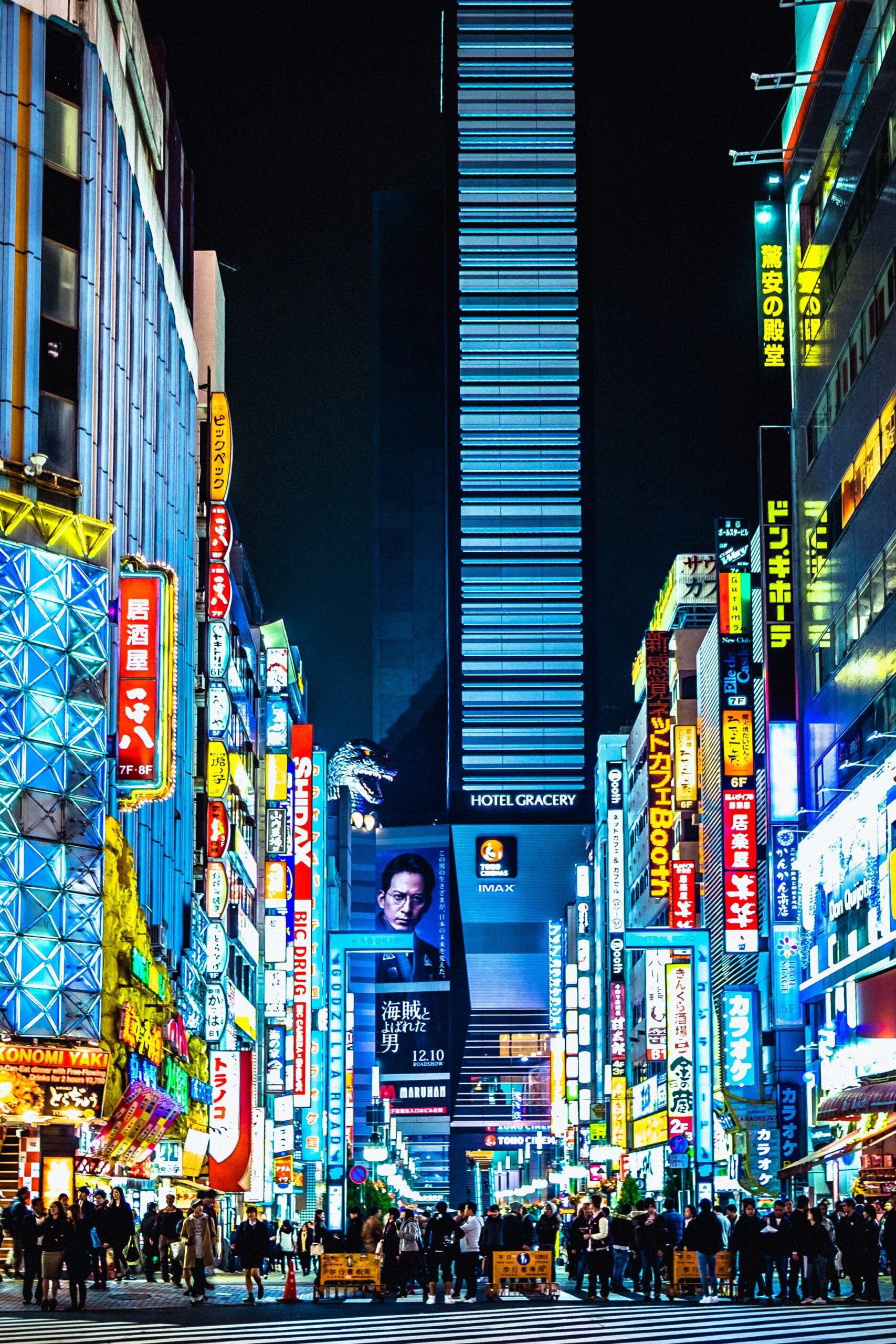In a world increasingly defined by urbanization, the concept of a megacity has captured the imagination and scrutiny of planners, environmentalists, and economists alike. Towering above its global counterparts, Greater Tokyo stands as a testament to human ingenuity, resilience, and ambition, having established itself firmly as the world’s largest megacity. This sprawling urban expanse not only champions the future of metropolitan living but also sets a benchmark for sustainable growth, technological innovation, and cultural diversity in the 21st century. As we delve into the facets that contribute to Tokyo’s remarkable status, it becomes evident that this city is not just a place on a map, but a dynamic entity shaping the future of urban life on a global scale.
Greater Tokyo: A Glimpse into the Future
Greater Tokyo, a sprawling urban expanse, serves as a vivid glimpse into the future of urban living. With its cutting-edge technology, robust infrastructure, and vibrant cultural scene, Tokyo offers a preview of what the future might hold for megacities around the world. The city’s blend of traditional values with futuristic innovation creates a unique environment where the past and the future coexist harmoniously. Tokyo’s ability to adapt and evolve has made it a model for urban development, showcasing the potential for cities to grow sustainably while maintaining a high quality of life for their inhabitants. As the world looks to Tokyo, it sees a city that has managed to balance growth with sustainability, tradition with innovation, and individuality with community.
Unpacking the World’s Largest Megacity
Tokyo’s status as the world’s largest megacity is not just a title; it’s a testament to its expansive geography, population, and economic prowess. Spanning over 13,500 square kilometers and housing more than 37 million people, Greater Tokyo is a behemoth of urban development. This megacity is not only the most populous urban area globally but also one of the most densely populated, presenting unique challenges and opportunities for urban planners and policymakers. Tokyo’s economic output is equally impressive, contributing significantly to Japan’s GDP and serving as a vital hub for international trade and business. The city’s vast size and complexity require innovative approaches to governance, planning, and environmental management, making Tokyo a living laboratory for megacity development.
Demographic Dynamics: Tokyo’s Growing Population
The demographic dynamics of Tokyo are characterized by a growing population, albeit at a slower rate than in previous decades. This growth is driven by a combination of factors, including migration from other regions of Japan and an increasing number of international residents. Despite Japan’s overall aging population, Tokyo has managed to maintain a relatively youthful demographic profile, thanks to its appeal to young professionals and families seeking opportunities in education, employment, and entertainment. The city’s population dynamics are a crucial factor in shaping its social fabric, economic development, and urban policies, with efforts focused on accommodating growth while ensuring quality of life and sustainability.
Infrastructure Ingenuity in Greater Tokyo
Greater Tokyo’s infrastructure is a marvel of modern engineering and urban planning. The city’s comprehensive public transportation network, including the famous Tokyo Metro, efficiently moves millions of people daily, reducing reliance on personal vehicles and minimizing traffic congestion. Tokyo’s resilience to natural disasters, such as earthquakes and typhoons, is bolstered by state-of-the-art building codes and disaster preparedness strategies, making it one of the safest megacities in terms of infrastructure reliability. Investments in green spaces, water management, and energy efficiency further demonstrate Tokyo’s commitment to sustainability and livability. This infrastructural ingenuity not only supports the city’s current needs but also lays the foundation for future growth and innovation.
Economic Epicenter: Tokyo’s Global Influence
Tokyo’s position as an economic epicenter is undisputed, with the city serving as a critical hub for finance, manufacturing, and technology. Home to numerous Fortune 500 companies and a bustling startup scene, Tokyo is at the forefront of global economic trends and innovations. The city’s strategic location in Asia, combined with its advanced infrastructure and skilled workforce, makes it an attractive destination for international business and investment. Tokyo’s influence extends beyond its economic might, shaping global culture, fashion, and entertainment. As a leader in addressing urban challenges, Tokyo also contributes to international dialogues on sustainability, urbanization, and the future of work, highlighting its role as a global influencer.
Navigating Tokyo: A Transport Phenomenon
Navigating Tokyo is an experience in efficiency and precision, thanks to its world-renowned public transportation system. The intricate network of trains, subways, and buses is designed to accommodate the city’s vast population, ensuring smooth transit for commuters and tourists alike. Tokyo’s commitment to transportation excellence is evident in its punctual services, clean facilities, and user-friendly navigation tools. The city’s efforts to expand and modernize its transportation infrastructure, including the development of eco-friendly and autonomous vehicles, reflect its forward-thinking approach to urban mobility. This transport phenomenon not only facilitates daily life in Tokyo but also sets a standard for cities worldwide, demonstrating the potential of integrated and innovative transportation solutions.
Urbanization Unleashed: Tokyo’s Expansion Examined
The expansion of Tokyo over the decades is a testament to the city’s dynamism and its ability to reinvent itself. From a modest fishing village to the world’s largest megacity, Tokyo’s growth has been fueled by economic development, technological advancements, and strategic urban planning. The city’s expansion has not been without its challenges, including housing shortages, environmental pressures, and social disparities. However, Tokyo has tackled these issues head-on, implementing policies to promote balanced development, environmental sustainability, and social inclusion. The city’s ongoing transformation offers valuable lessons on managing urbanization in a way that is both ambitious and mindful of future generations.
Tokyo’s Cultural Kaleidoscope: A Global Melting Pot
Tokkyo’s rich cultural tapestry is woven from threads of tradition and innovation. As a global melting pot, the city is home to a diverse population that contributes to a vibrant cultural scene, blending Japanese traditions with international influences. From ancient temples and historic districts to contemporary art galleries and technology museums, Tokyo offers a kaleidoscopic array of cultural experiences. The city’s culinary landscape, characterized by Michelin-starred restaurants and neighborhood izakayas, reflects its diversity and gastronomic excellence. Tokyo’s festivals, fashion, and pop culture resonate worldwide, illustrating the city’s role as a cultural trendsetter and global influencer.
Environmental Endeavors in the Heart of Tokyo
In the heart of Tokyo, environmental endeavors illustrate the city’s commitment to sustainability and resilience. Facing challenges such as air pollution, urban heat islands, and energy consumption, Tokyo has implemented initiatives to reduce its environmental footprint and enhance livability. Efforts include expanding green spaces, promoting renewable energy, and encouraging sustainable practices among businesses and residents. The city’s ambitious plans to achieve carbon neutrality by 2050 underscore its leadership in addressing climate change. Tokyo’s environmental strategies not only improve the quality of life for its inhabitants but also serve as a model for sustainable urban development globally.
The Challenges of Sustaining a Megacity
Sustaining a megacity like Tokyo presents a complex array of challenges, ranging from demographic shifts and economic pressures to environmental sustainability and disaster resilience. Managing the needs of a diverse and growing population while maintaining a high standard of living requires innovative solutions and collaborative governance. Tokyo’s efforts to address these challenges, through policy reforms, technological advancements, and community engagement, underscore the city’s proactive approach to urban management. However, as Tokyo continues to evolve, it must navigate the delicate balance between growth and sustainability, leveraging its strengths while addressing its vulnerabilities.
Technology and Innovation: Tokyo’s Secret Weapons
Technology and innovation are Tokyo’s secret weapons in its quest to remain a leading global city. From robotics and artificial intelligence to biotechnology and clean energy, Tokyo is at the cutting edge of scientific and technological research and development. The city’s culture of innovation is supported by strong collaboration between industry, academia, and government, fostering an ecosystem that encourages creativity and entrepreneurship. Tokyo’s strategic investments in innovation not only drive economic growth but also offer solutions to societal challenges, reinforcing its position as a hub of progress and a beacon for future cities.
Tokyo’s Blueprint: Shaping Megacities Worldwide
Tokyo’s evolution from a modest fishing village to the world’s largest megacity offers a blueprint for urban development that resonates with cities worldwide. The lessons learned from Tokyo’s experience—balancing growth with sustainability, tradition with innovation, and community with individuality—are invaluable for policymakers, planners, and citizens alike. As megacities continue to emerge and expand, Tokyo’s journey provides insights into the possibilities and challenges of urbanization in the 21st century. By sharing its knowledge and experiences, Tokyo contributes to a global dialogue on creating livable, resilient, and dynamic urban spaces for future generations.
Greater Tokyo’s stature as the world’s largest megacity is more than a demographic or economic milestone; it is a living testament to what cities can achieve when tradition merges with innovation, and sustainability is woven into the fabric of urban life. As Tokyo continues to navigate the complexities of maintaining its colossal urban ecosystem, it offers valuable lessons and inspiration for megacities around the globe. Its achievements in infrastructure, environmental sustainability, and technological innovation, against a backdrop of cultural richness and diversity, not only redefine urban living but also set a benchmark for the future of global cities. In the story of Greater Tokyo, we find a vision of the future—a future where cities are not just places to live, but places where humanity thrives.

